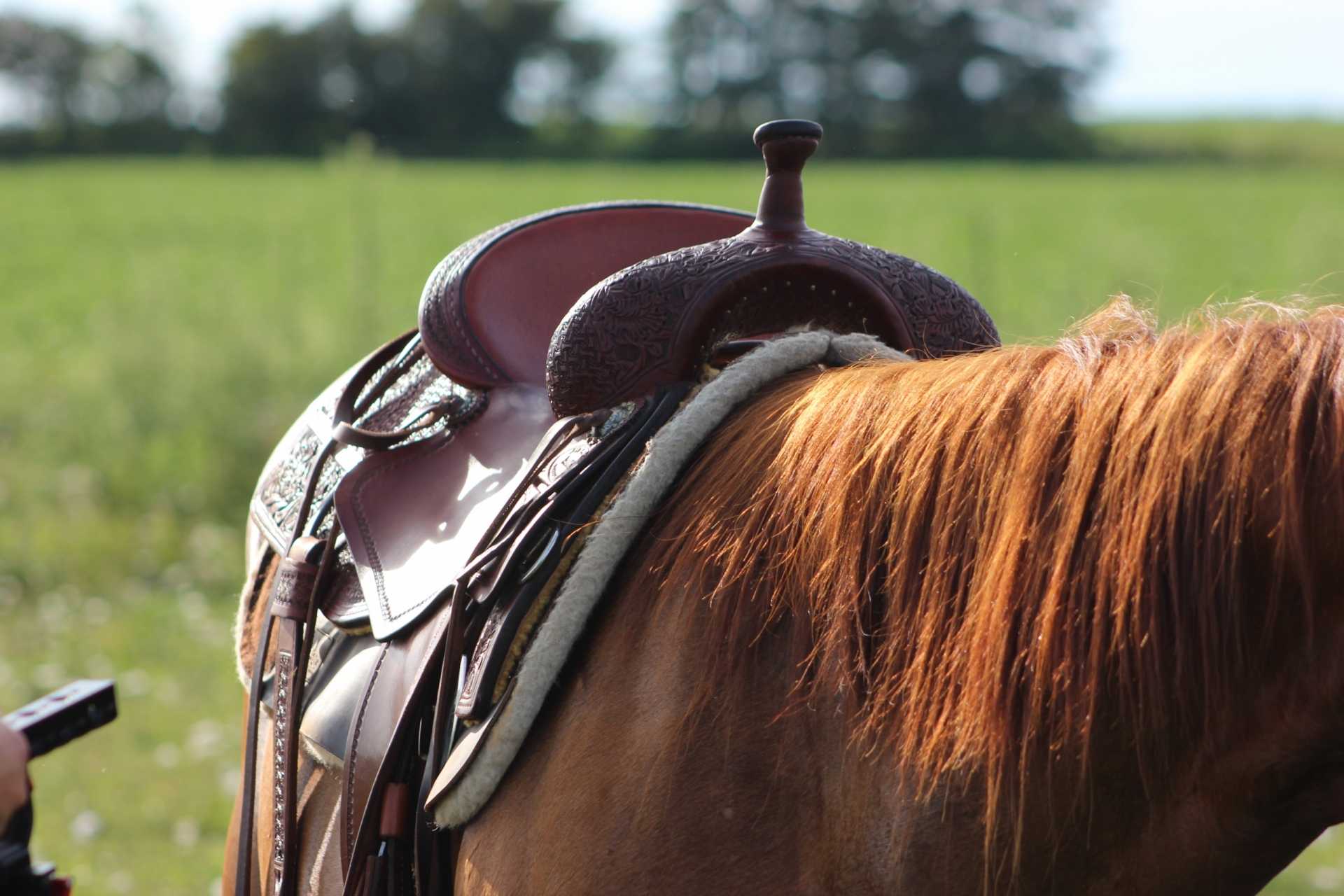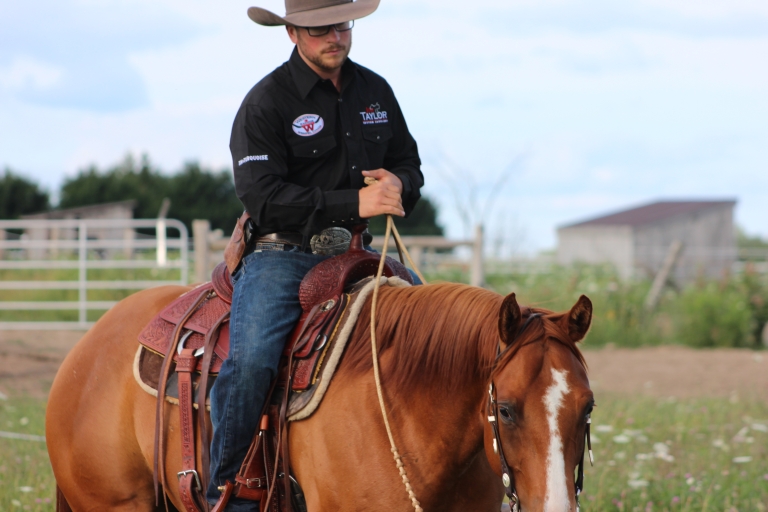As a rider, it’s essential to understand the different parts of your western horse saddle. It will guarantee your safety, comfort, and overall performance, whether you’re a beginner or an experienced rider.
Additionally, knowing the purpose and function of each part of the saddle can help you make informed decisions when buying, fitting, and maintaining your saddle.
The western horse saddle has a rich history. Used for thousands of years, the Roman cavalry devised the “four tree” design as early as 1 BC to make horseback riding more comfortable and practical.
Fast forward to the American West in the 1800s, where cowboys and ranchers needed saddles that could withstand the rigors of working cattle and enduring long hours on horseback. The western saddle evolved into a versatile and popular style for various disciplines, such as trail riding, barrel racing, roping, and pleasure riding.
In this article, we will provide an overview of the different parts of a western horse saddle, including the saddle tree, horn, cantle, skirt, fenders, stirrups, and gullet. By the end of this guide, you’ll have a better understanding of how each part contributes to your saddle’s fit, comfort, and performance. Let’s dive in!
Saddle tree: supporting the rider and horse
The saddle tree is the foundation of a western horse saddle. Its rigid structure supports the rider and distributes their weight evenly across the horse’s back. This protects the horse and maintains the saddle’s shape.
Saddle trees protect the horse
Your saddle needs a good saddle tree because it protects your horse in several ways.
- Firstly, it helps distribute the rider’s weight evenly across the horse’s back, reducing the risk of pressure points and soreness.
- Secondly, a well-designed and well-fitted saddle tree helps prevent the saddle from pinching or rubbing against the horse’s spine, withers, or shoulders, which can cause discomfort, pain, or even long-term damage.
- Thirdly, a good saddle tree allows the horse’s shoulders and back to move freely and without restriction. This is essential for their comfort during riding and training.
Overall, a properly fitted and designed saddle tree is crucial for the horse’s comfort, health, and performance.
Types of saddle trees
The tree also helps maintain the saddle’s shape and prevents it from collapsing or pinching
There are two main types of saddle trees: traditional and modern.
- Traditional trees are made of wood, such as pine, cedar, or oak, and are still used in some custom or handmade saddles.
- Modern trees are typically made of lightweight and durable materials, such as fiberglass, plastic, or carbon fiber, and offer more flexibility and customization options.
At Jim Taylor Custom Saddles, we handcraft all our saddles using durable trees designed for performance.
- The JT04 TREE is our “go-to” tree for the serious Reiner or Cow Horse competitor. It features a Close Contract feel, a deep secure seat and properly angled bars that allow horse and rider to feel as one and maintain position throughout a competition. It is designed to fit the modern horse and has the versatility to fit a wide range of horses.
- The JT12 TREE is the ideal tree for the Working Cow Horse or Cutting competitor. The flat seat allows the rider to use the entire saddle and be in the right part of the saddle at exactly the correct time during a maneuver. It features a thinner and lower swell which will not interfere with the rider’s leg position.
- The JT11 TREE features a combination or an “association” style swell with a quarter-horse-width gullet. The cantle is 3 and 1¼ tall with a deep dish. The bars are “Arizona” type with our special & flare for equal pressure over the entire horse’s back. Our “Shoulders Free” front bar angle greatly reduces the pressure on both sides of the horse’s withers above the scapula area.
- The JT02-RD TREE is our Classic style Reining and Western Pleasure tree. This tree features a deep dish cantle for added security and consistency, which keeps the rider in the center of the saddle. Combined with a narrow seat, this tree provides the rider with optimum security and comfort.
A key characteristic of Jim Taylor saddles is its “shoulders-free” design. The shoulders-free trees are the latest version of their successful trees, designed with modern horse anatomy and technology in mind. They feature ultra-thin and durable JT bars for optimal fit, a new cantle style for rider comfort, and multiple customization options.
Let’s now talk about the horn.
Saddle horn
The horn, also known as the pommel, is the raised knob at the front of a western saddle. It serves several purposes:
- providing a handhold for the rider to hold onto for balance and stability, and
- a secure anchor point for lassos, reins, or other equipment.
Types of horns
There are several types of horns available, each with its own unique design and purpose.
For example, a roping horn is typically taller and thicker to provide more leverage and support during cattle work, while a pleasure or trail riding horn may be shorter and narrower for easier mounting and dismounting.
Horn maintenance
To take care of your saddle, you need to know a thing or two about horn care and maintenance.
The horn should be kept clean and dry to prevent damage or rot, and any loose or frayed stitching should be repaired promptly. Regular conditioning with a leather conditioner or oil can help keep the horn supple and resistant to cracking or splitting over time.
The horn is an essential part of a western saddle that adds both functionality and style to the rider’s experience.
Cantle
The cantle is the raised back part of a western saddle that provides support and security to the rider’s lower back. The cantle plays several roles:
- providing a comfortable and secure seat for the rider, and
- helping to keep the rider centered and balanced during riding and maneuvers.
Types of cantles
There are several types of cantles available, each with its own unique design and purpose.
For example, a high cantle may be preferred by riders who need more support or stability, while a low cantle may be preferred by riders who want more freedom of movement and flexibility.
Cantle maintenance
Just as with the horn, cantle maintenance is important to ensure the longevity and performance of the saddle. Keep the cantle clean and dry, and repair any loose or frayed stitching promptly if it happens. Regular conditioning with a leather conditioner or oil can help keep the cantle supple and resistant to cracking or splitting over time.
Saddle skirt
The skirt of a western saddle is the panel that lies beneath the fenders and stirrups, covering the horse’s sides and protecting them from the pressure of the rider’s legs. It can also provide additional surface area for decorative tooling or design elements.
Types of skirts
There are several types of skirts, each with its own unique design and purpose.
For example, a round skirt may be preferred by riders who want a closer contact feel with their horse, while a square skirt may be preferred by riders who want a more traditional look and feel.
Skirt maintenance
To ensure the skirt’s longevity, it’s recommended to regularly check the stitching and any wear and tear on the material. Cleaning the saddle skirt after each use with a soft brush or damp cloth can also help prevent any dirt buildup that could potentially cause abrasions. Leather conditioners can be applied to the saddle skirt to help maintain its suppleness and prevent cracking.
Fenders and stirrups
The fenders and stirrups of a western saddle are the parts that attach the rider’s feet to the saddle and provide stability and control during riding and maneuvers. The fenders are the leather straps that attach to the tree and hold the stirrups, while the stirrups are the footrests that hang from the fenders and support the rider’s feet.
Types of fenders and stirrups
There are several types of fenders and stirrups available, each with its own unique design and purpose.
For example, a stirrup with a wide footbed may be preferred by riders who want more stability, while a stirrup with a narrow footbed may be preferred by riders who want more flexibility.
Fender and stirrup maintenance
Care and maintenance of the fenders and stirrups is important to ensure the safety and performance of the saddle.
The leather should be kept clean and dry, and any loose or frayed stitching should be repaired promptly. Regular conditioning with a leather conditioner or oil can help keep the fenders and stirrups supple and resistant to cracking or splitting over time.
Gullet
The gullet of a western saddle is the space between the bars of the tree that runs down the length of the saddle, providing clearance for the horse’s spine and whither and allowing for proper fit and movement. It is an important part of the saddle that should be carefully considered when selecting or fitting a saddle to a horse.
Types of gullets
There are several types of gullets available, each with its own unique design and purpose.
For example, a wide gullet may be preferred by riders who need more clearance for a horse with a broader spine or whither, while a narrow gullet may be preferred by riders who want more contact and feel with their horse.
Gullet maintenance
To maintain the integrity of the gullet, it’s important to regularly inspect the saddle for any signs of compression or damage. If you find any issues, have a professional saddle fitter evaluate the saddle and make any necessary adjustments. Additionally, regular cleaning with a soft brush or damp cloth can help prevent dirt buildup that could cause chafing or irritation.
Bottom line
Understanding the different parts of a western horse saddle is essential for any rider or horse owner. The saddle tree, horn, cantle, skirt, fenders, stirrups, and gullet all play a critical role in providing comfort and safety for both horse and rider. By properly maintaining and caring for each component, you can help ensure the longevity of your saddle and the health of your horse.
If you’re in the market for a custom western saddle, we highly recommend exploring the tailor-made options at Jim Taylor Custom Saddles. Our shoulders-free tree design and use of top-quality materials and craftsmanship make for a saddle that not only fits your horse perfectly but also provides unparalleled comfort for the rider.


